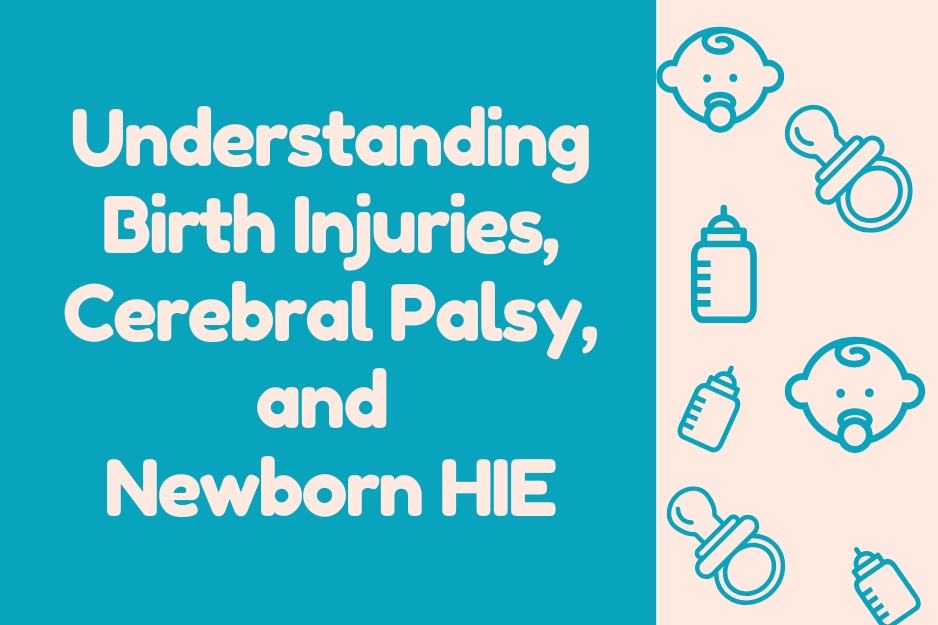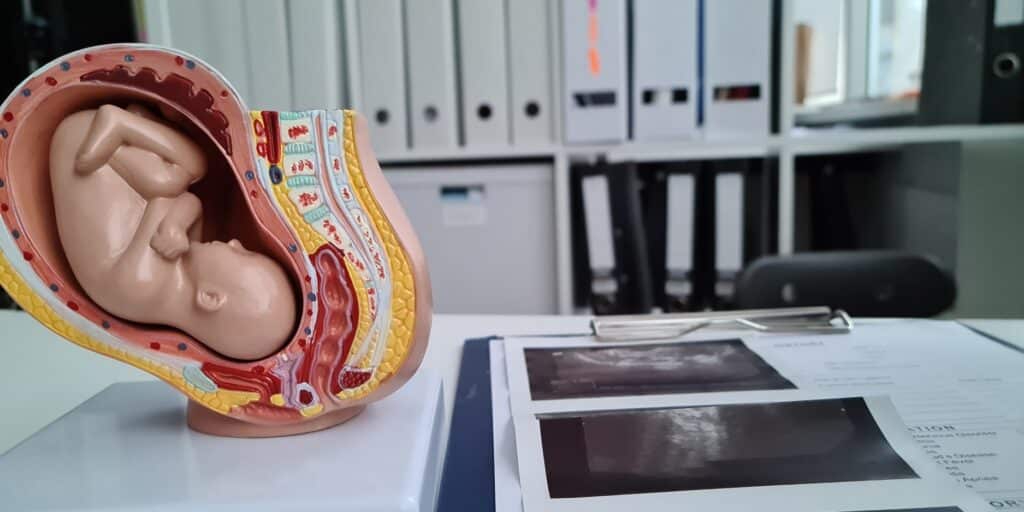
Understanding Birth Injuries, Cerebral Palsy, and Newborn HIE
The birth of a child is a moment filled with hope and joy, but for some parents, it may come with unexpected challenges. Birth injuries such as Cerebral Palsy or Hypoxic-Ischemic Encephalopathy Newborn (HIE) can bring confusion, heartache, and countless questions.
If you’re navigating this difficult path, understanding what happened during your child’s birth—and whether medical negligence may have been involved—is critical.
At The Yost Legal Group, we are here to provide you with the guidance, investigation, and answers you need to protect your child’s future.
If your baby has an HIE medical diagnosis, call us for a free and confidential consultation at 1-800-967-8549.
What Is a Birth Injury?
A birth injury is damage sustained by an infant during labor and delivery. These injuries can range from:
- minor, temporary conditions
- more severe forms of harm
- developmental delays
- lifelong disabilities
Some birth injuries can occur despite the best medical care. However, others may result from improper medical decisions and actions during the birthing process.
What are the common causes of birth injuries?
Birth injuries can happen for various reasons, but some common causes include:
- Restricted oxygen flow (birth asphyxia): When an infant’s brain is deprived of oxygen during delivery, it can result in conditions like HIE and Cerebral Palsy. The lack of oxygen can cause a hypoxic ischemic encephalopathy hie injury.
- Untreated infections: Failing to identify and treat maternal or fetal infections can lead to complications before or during labor.
- Improper use of delivery tools: When tools like forceps or vacuum extractors are misused, they can cause physical trauma or damage to the baby.
- Delayed emergency responses: Failure to recognize and act on signs of fetal distress, such as abnormal heart rates, can have devastating outcomes.
These situations do not always constitute negligence, but when medical professionals fail to meet the standard of care required, the results can be life-altering.
An HIE lawyer can explain the steps in filing a birth injury lawsuit. Our cerebral palsy lawyers have many years of experience. We help parents get financial compensation for their child’s care. This support can last a lifetime.
How is neonatal HIE diagnosed?
HIE (hypoxic-ischemic encephalopathy) is often suspected in newborns shortly after birth due to alarming signs like seizures, difficulty breathing, blue lips and/or skin color, and low or no muscle tone (often called “floppy” or “floppy baby”) or complications during labor and delivery. Diagnosing HIE requires swift action and the use of various medical tests, which include:
- Blood Tests: These assess oxygen levels, electrolytes, enzymes, and other crucial markers in the blood to help confirm HIE.
- Umbilical Cord or Placenta Testing: Analyzing blood from the umbilical cord or examining the placenta can help determine the root cause.
- Lumbar Puncture: A sample of cerebrospinal fluid is taken from the lower back to check for possible infections.
- Head Ultrasound: This evaluates brain activity to detect bleeding or fluid buildup.
- EEG (Electroencephalography): Conducted within a baby’s first day, this test measures brain activity for abnormalities.
- Brain MRI: Performed between days 4–7 post-birth, an MRI identifies areas in the brain affected by damage.
Symptoms of HIE may not always be immediately apparent. Children with mild symptoms might be diagnosed later in life when developmental delays or motor function issues become evident. If you notice any concerns, consult your child’s healthcare provider to assess symptoms, review health history, and perform a physical exam.
Prompt detection is critical—if you suspect HIE, seek medical evaluation immediately.
Define hypoxic ischemic encephalopathy.
Hypoxic ischemic encephalopathy (HIE) is a critical condition where a newborn’s brain doesn’t get enough oxygen or blood flow during labor and delivery or shortly after birth.
The terms explain Hypoxic-Ischemic Encephalopathy:
- Hypoxic = Insufficient oxygen
- Ischemic = Insufficient blood flow
- Encephalopathy = Brain disorder
This type of brain injury can lead to varying outcomes. Some children experience no lasting effects, while others may face permanent disabilities or, in severe cases, death.
The extent of harm depends on factors such as the duration of oxygen deprivation and the specific parts of the brain that the deprivation impacted. HIE medical abbreviation stands for Hypoxic ischemic encephalopathy.
If you have questions about your HIE infant, call The Yost Legal Group for help. We will investigate what happened and why, and if negligence was involved, we will file a birth trauma lawsuit.
Birth injury cases are complex and require experienced cerebral palsy attorneys to file a medical malpractice lawsuit. We are here to listen, support, and guide you in the best way possible to support your child.
Key Symptoms of HIE:
- Breathing difficulties
- Low heart rate
- Seizures or unusual movements
- Weak muscle tone
- Inability to regulate body temperature
- Blue or pale skin
- Poor reflexes
- Reduced activity or alertness
- Abnormal blood glucose levels
HIE is also known as birth asphyxia, perinatal asphyxia, or neonatal encephalopathy.
Take Action Immediately
If your newborn has shown any potential signs of HIE, it’s essential to seek medical evaluation promptly. Early intervention can make a significant difference. Consult with a healthcare provider to learn about treatment options and next steps.
Was my baby’s birth injury caused by a medical mistake?
Determining whether your child’s injury was linked to medical negligence is key to getting answers and seeking justice.
Here are some signs that may indicate mistakes were made during your child’s birth:
- Unclear or inconsistent explanations: If healthcare providers cannot adequately explain why your child was injured, there may be more to investigate.
- Complications during delivery: Events like prolonged labor, failure to perform a timely C-section, or incorrect use of medical equipment may point to errors.
- Delayed or missed diagnoses: Some injuries, such as HIE, may stem from an undiagnosed condition, such as a slow fetal heart rate (bradycardia), that could have been prevented with timely action.
If you suspect that a preventable issue caused your child’s birth injury, speaking with an experienced birth injury lawyer can help you uncover the truth.
How Can a Birth Injury Lawyer Help?
Navigating the legal system and understanding medical terms can feel overwhelming. This is where an experienced birth injury lawyer steps in. Here’s how we can support you:
- Investigation and analysis: We partner with medical experts to review your records and identify whether a mistake occurred.
- Advocacy for your child: A birth injury lawyer will fight for compensation to cover your child’s medical expenses, therapy, and long-term care.
- No upfront costs: At The Yost Legal Group, our consultations are free, and you pay no fees unless we win your case.
Our team has years of experience handling birth injury claims nationwide. We understand the emotional and financial toll these situations take on families, and we are here to help you every step of the way.
Protect your child’s future after an HIE diagnosis
If you think your child’s birth injury was caused by medical negligence, don’t wait to take action.
Birth injuries like Cerebral Palsy or HIE demand immediate attention to ensure your child gets the care and resources they need.
Contact The Yost Legal Group for a free, confidential consultation. Our experienced birth injury attorneys are ready to help you.
We will uncover answers, seek accountability, and secure the financial support your family needs.
Call us at 1-800-967-8529 today.
Let us fight for justice—because every child deserves a fair start.
Hypoxia in Newborns – Asphyxia in Newborns – Hypoxic Infant – HIE Neonates


